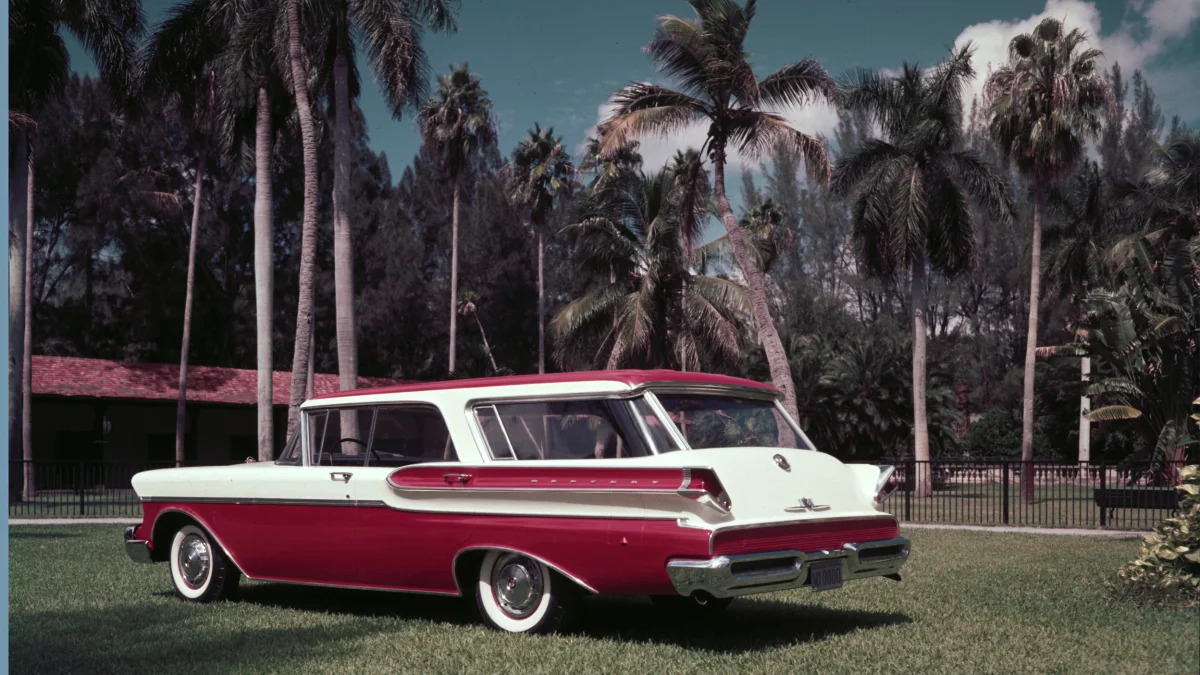There once was an emphasis on green products at Ford Motor Company. Bill Ford Jr. even came out as an unapologetic environmentalist. In 2010, he told the McKinsey Quarterly, "When I joined the board, in 1988, I was told I couldn't have any environmental leanings. I completely disregarded that." He was arguably following in the footsteps of his great-grandfather, as Henry Ford was a man who knew that conservation was a plus in terms of saving money. And let's not forget that he was way ahead of the curve when it came to things such as making body panels out of soybean-based polymer.
Nowadays, greater attention is being placed on Ford's autonomous undertakings. After all, the F-150 of today is a whole lot more environmentally sound that some of its predecessors, but it is no C-MAX. And the car that Ford is certain to keep as it undergoes its transformation is the Mustang — not exactly the official vehicle of Greenpeace, but better today than in the past. And it's probably destined to be much better when the electrified version comes out.
But one way that Ford is seriously environmental is in the "reuse" aspect of its business, which is clearly the case at its Michigan Assembly Plant in Wayne, Mich., which has just launched the Ford Ranger after an $850 million plant upgrade. The investment will also be used for the production of the much-anticipated Ford Bronco, scheduled to go down the assembly line in 2020.
The factory opened in 1957, the year that Bill Ford Jr. was born. It was the Michigan Station Wagon Plant back then, and it made Mercury station wagons. It had a redo in 1964 and started building trucks, including the F-100. It even built Broncos. During the '80s it had a run with cars, including the Escort. In the mid-'90s through 2009, it was building the body-on-frame SUVs, the Ford Expedition and Lincoln Navigator. After another retooling it began making cars: the Focus and the aforementioned C-MAX.
Above is a gallery of Michigan Assembly Plant products over the decades.
According to Ford, during the period when it was building Expeditions and Navigators, the plant was "among the most important and profitable plants in the world."
Presumably Ford leaders are hoping that lighting will strike twice in Wayne. Given Ford's declining stock price over the past several months, it could probably use some more of that profitability sooner rather than later.
Related Video:
Nowadays, greater attention is being placed on Ford's autonomous undertakings. After all, the F-150 of today is a whole lot more environmentally sound that some of its predecessors, but it is no C-MAX. And the car that Ford is certain to keep as it undergoes its transformation is the Mustang — not exactly the official vehicle of Greenpeace, but better today than in the past. And it's probably destined to be much better when the electrified version comes out.
But one way that Ford is seriously environmental is in the "reuse" aspect of its business, which is clearly the case at its Michigan Assembly Plant in Wayne, Mich., which has just launched the Ford Ranger after an $850 million plant upgrade. The investment will also be used for the production of the much-anticipated Ford Bronco, scheduled to go down the assembly line in 2020.
The factory opened in 1957, the year that Bill Ford Jr. was born. It was the Michigan Station Wagon Plant back then, and it made Mercury station wagons. It had a redo in 1964 and started building trucks, including the F-100. It even built Broncos. During the '80s it had a run with cars, including the Escort. In the mid-'90s through 2009, it was building the body-on-frame SUVs, the Ford Expedition and Lincoln Navigator. After another retooling it began making cars: the Focus and the aforementioned C-MAX.
Above is a gallery of Michigan Assembly Plant products over the decades.
According to Ford, during the period when it was building Expeditions and Navigators, the plant was "among the most important and profitable plants in the world."
Presumably Ford leaders are hoping that lighting will strike twice in Wayne. Given Ford's declining stock price over the past several months, it could probably use some more of that profitability sooner rather than later.
Related Video:











Sign in to post
Please sign in to leave a comment.
Continue